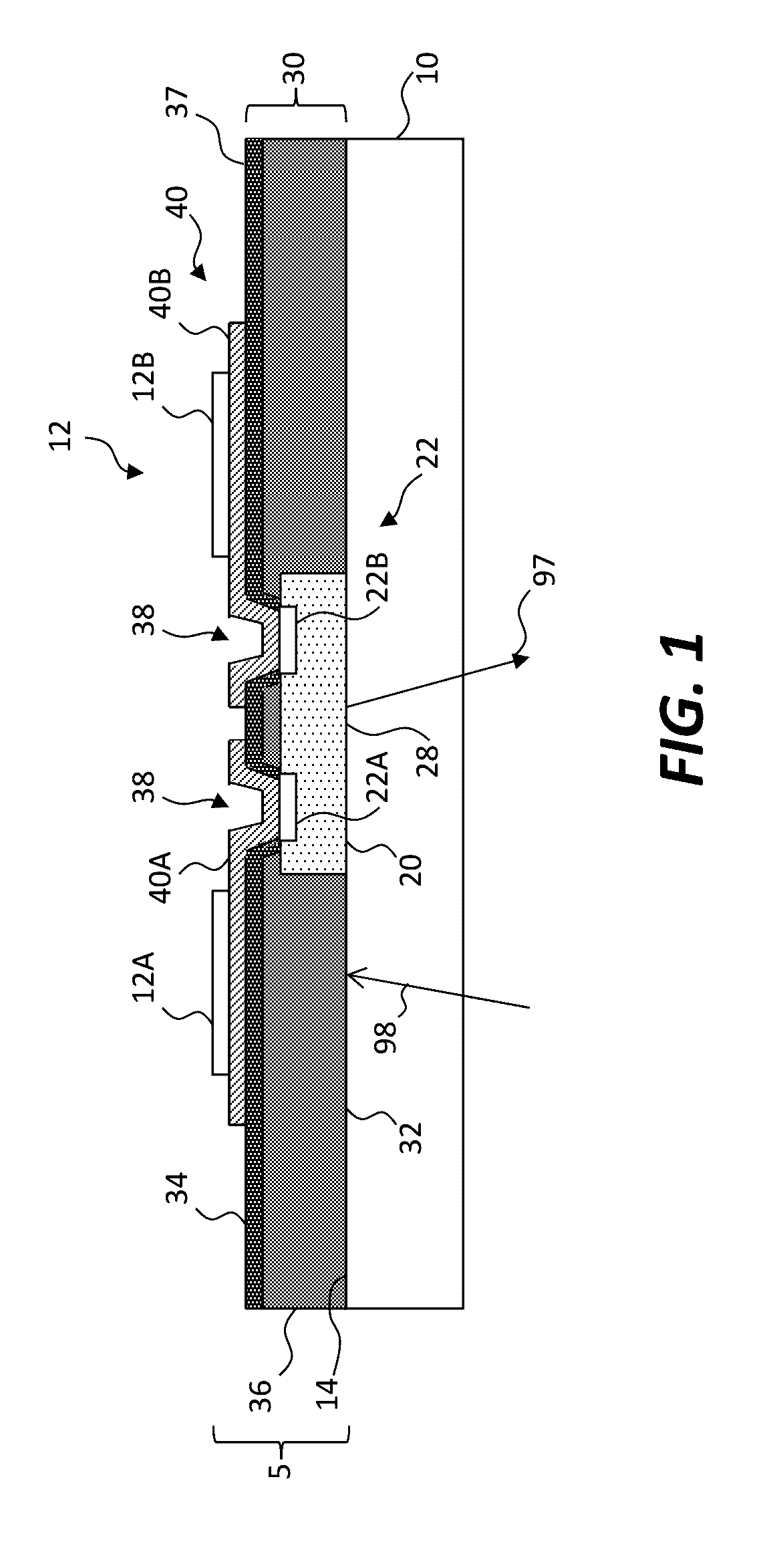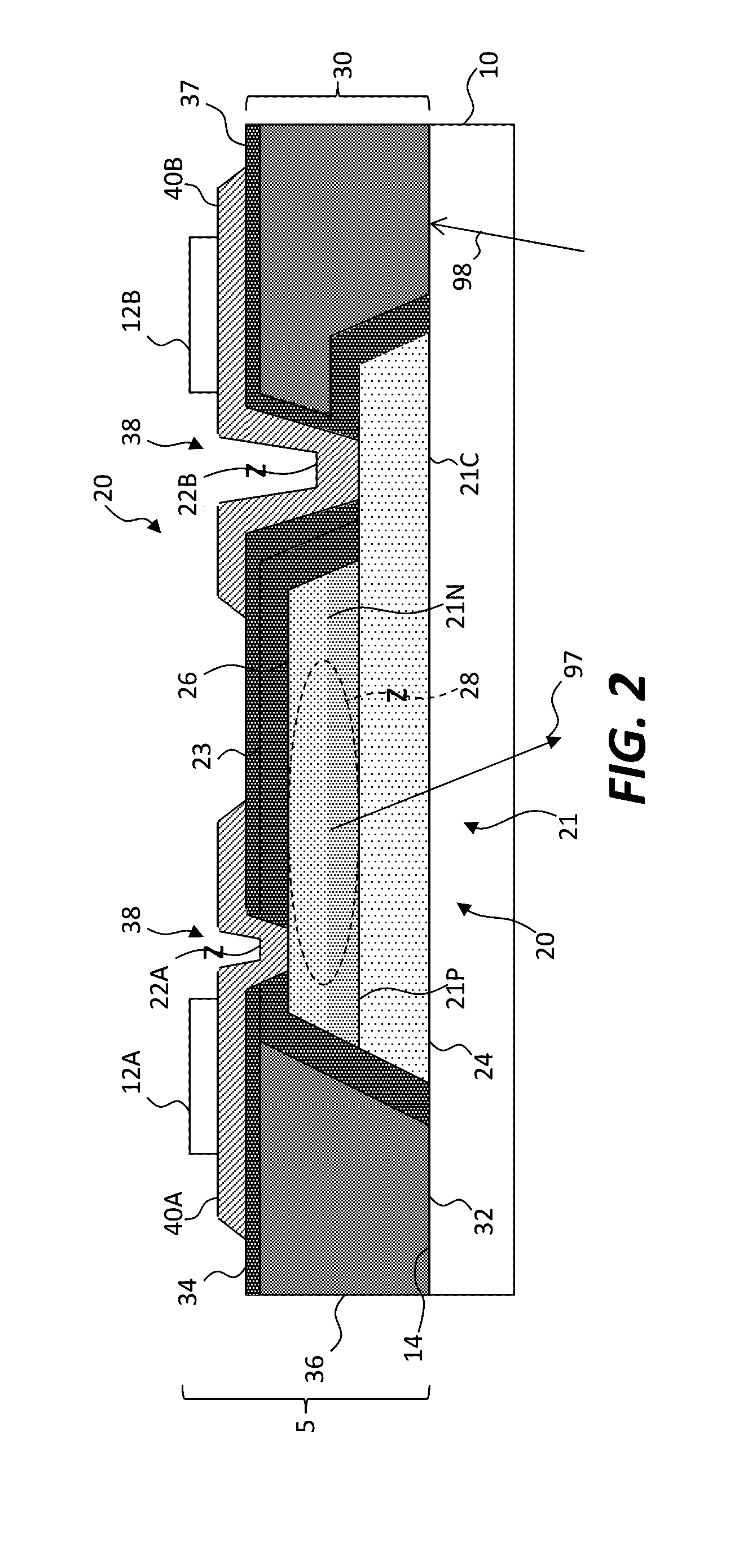Display tile structure and tiled display
a display and tile technology, applied in semiconductor devices, solid-state devices, instruments, etc., can solve the problems of limiting the size of integrated flat-panel devices such as displays, difficult and expensive thin-film semiconductor structures on large substrates, and crystalline semiconductors found in typical integrated circuits. achieve the effect of improving functionality, reducing thickness, and increasing resolution
- Summary
- Abstract
- Description
- Claims
- Application Information
AI Technical Summary
Benefits of technology
Problems solved by technology
Method used
Image
Examples
Embodiment Construction
[0065]Referring to the cross section of FIG. 1 and the detailed cross section of FIG. 2, in an embodiment of the present invention a display tile structure 5 includes a tile layer 30 having a backplane side 34 and an emitter side 32 opposite the backplane side 34. The tile layer 30 can include or be a light-absorbing material 36 and can include sub-layers such as a dielectric layer 37, particularly if the tile layer 30 is at least partially electrically conductive. The dielectric layer 37 can be an interlayer dielectric. A light emitter 20 is disposed in the tile layer 30 and arranged to emit light 97 from a light-emitting area 28 on the emitter side 32 of the tile layer 30. The light emitter 20 has first and second electrodes 22A, 22B, collectively referred to as electrodes 22, for conducting electrical current to cause the light emitter 20 to emit light 97. The first and second electrodes 22A, 22B can also be considered to be first and second light-emitter contact pads for the lig...
PUM
 Login to View More
Login to View More Abstract
Description
Claims
Application Information
 Login to View More
Login to View More - R&D
- Intellectual Property
- Life Sciences
- Materials
- Tech Scout
- Unparalleled Data Quality
- Higher Quality Content
- 60% Fewer Hallucinations
Browse by: Latest US Patents, China's latest patents, Technical Efficacy Thesaurus, Application Domain, Technology Topic, Popular Technical Reports.
© 2025 PatSnap. All rights reserved.Legal|Privacy policy|Modern Slavery Act Transparency Statement|Sitemap|About US| Contact US: help@patsnap.com



